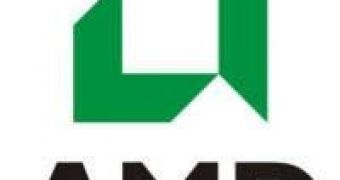After analyzing the quarterly results, AMD announces that it has made some progress both in mobile chips for notebooks and in desktop processors. The company is declared to have better cash flow and reduced operating loss. AMD presents a growth up to 43 per cent in chip sales, although most of this is due to the notebook sales from retailers and not on the commercial market. The quad-core AMD Opteron "Barcelona" registered tens of thousands of shipments and many more are expected to ship in the fourth quarter of this year, which played an important part in the company's sales, according to Dirk Meyer, AMD's president. Is there a possibility that Barcelona's significance was overplayed by marketeers?
On the other hand, Robert Rivet, chief beancounter, declared that the company is mainly interested in the customer space. AMD will continue to try its expansion in the commercial space and that its notebook offering sits squarely in the consumer space.
CEO Hector Ruiz said that the notebook emerging markets are strong, although the company experiences some problems. There seems to be a shortage of plastic that affects the company. Also, a difficulty in containing LCD displays and the exploding batteries problem continue to affect AMD. The battery factor represented a concerning point for most of the vendors.
AMD is expected to come back to floating line until 2009. The company already produces 45 nanometer processors beside the known 65nm ones. In the first half of the next year, the company will start its production ramp of 45 nanometer processors, as Dirk Meyer declared. This statement sounds better than expected, considering AMD's previous claims related to its good handling of 65nm migration.
Meyer declared that the things are starting to settle down now. The basic silicon yields are on the right place and nothing appears to be wrong with AMD processors at the moment. There is a simple issue related to tuning the design to the technology, which will result in the support of a high volume ramp. According to Meyer, this issue causes AMD to take a little more time before turning around the high volume ramp during this quarter.
The ATI graphics card business was a benefit for AMD. The company suggested that it increased its market share and they seem rather optimistic abut it. The graphics card business appears to keep the company on the line for now. We should also notice the fact that Robert Rivet stated the people who didn't perform well are "back filled" with better employees. Though that may sound rough, all points to increased revenue for AMD in the coming year.

 14 DAY TRIAL //
14 DAY TRIAL //